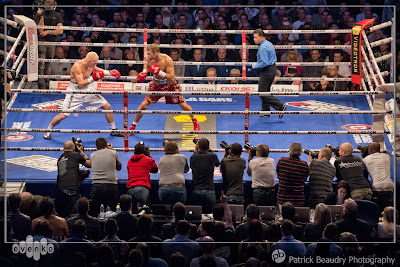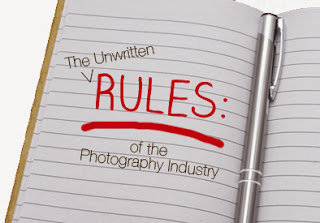To see additional pics from that event, click HERE
In the cast of her "Miroir" tour, Marie-Mai gave her fans, 2 electrifying performances at the Bell Center, Nov 28th-29th 2013.
 In certain cases, it is difficult, yet impossible to be located, at the ideal vantage point from where you'd like to be holding a camera. Other times, it's just more convenient to have several cameras positioned in different locations, while you shoot with a hand-held, from another unrestricted area. Perfect examples of this are; a goal cam during a hockey game, a cam positioned behind the backboard at a basketball game, ceiling during a boxing gala, etc...
In certain cases, it is difficult, yet impossible to be located, at the ideal vantage point from where you'd like to be holding a camera. Other times, it's just more convenient to have several cameras positioned in different locations, while you shoot with a hand-held, from another unrestricted area. Perfect examples of this are; a goal cam during a hockey game, a cam positioned behind the backboard at a basketball game, ceiling during a boxing gala, etc... During a recent concert, I had placed a camera behind the stage, aiming towards the crowd. This avoided me from having to go on stage, and risk disturbing the artist, stumble over cables, or worst, get in the way of pyros! In this post, we'll provide you with a few examples, along with detailed settings, and touch base on a few basic pointers of how to set your camera, what gear I personally use, and what my experience has been with wireless remotes. (Sorry for the iPhone photo)
During a recent concert, I had placed a camera behind the stage, aiming towards the crowd. This avoided me from having to go on stage, and risk disturbing the artist, stumble over cables, or worst, get in the way of pyros! In this post, we'll provide you with a few examples, along with detailed settings, and touch base on a few basic pointers of how to set your camera, what gear I personally use, and what my experience has been with wireless remotes. (Sorry for the iPhone photo) Placing an expensive camera body in a "plastic" enclosure, to potentially face a 100mph slap-shot, is something quite discomforting, in my mind. Yet, it enables you to obtain some pretty spectacular pics! The enclosure usually needs to be approved by the federation (NHL, LHJMQ). Instead of placing the "transmitter" unit on the hand-held camera, and take simultaneous shots, I usually trigger with a foot switch, or push-button switch in my hand. This prevents taking too many unwanted shots, when your hand-held camera is capturing action away from the goalie. It's also a good idea to hook up your laptop to the goal cam, to ensure that you've angled it properly, and that the captured images are well framed.
Placing an expensive camera body in a "plastic" enclosure, to potentially face a 100mph slap-shot, is something quite discomforting, in my mind. Yet, it enables you to obtain some pretty spectacular pics! The enclosure usually needs to be approved by the federation (NHL, LHJMQ). Instead of placing the "transmitter" unit on the hand-held camera, and take simultaneous shots, I usually trigger with a foot switch, or push-button switch in my hand. This prevents taking too many unwanted shots, when your hand-held camera is capturing action away from the goalie. It's also a good idea to hook up your laptop to the goal cam, to ensure that you've angled it properly, and that the captured images are well framed. How deep has the Industry sunk?
How deep has the Industry sunk? Below is a list of "Unwritten Rules" that should be observed by any photographer that respects himself, and wishes to be respected by his clients and fellow photogs. I'll even throw in a few, about people that deal with photographers, for good measure ;)
Below is a list of "Unwritten Rules" that should be observed by any photographer that respects himself, and wishes to be respected by his clients and fellow photogs. I'll even throw in a few, about people that deal with photographers, for good measure ;) If shooting a concert from a pit, boxing gala ringside, or a team sport from the sidelines, you should acknowledge this privilege by respecting the artist/players, and dress to be as conspicuous as possible. The crowd didn't come to the venue to see you. Most importantly, the "Main Attraction" surely doesn't need the distraction of your brightly-colored or fluorescent shirt. Wear dark colors, and be part of the shadows. Your clients, co-workers (and the talent) will appreciate you for it. Wearing bright fluorescent color, when shooting ringing at a boxing gala, (with live coverage on HBO), is NOT a good way of blending in. I'm thinking that possibly, our photographer friend, Herbie, hadn't gotten the memo! ;)
If shooting a concert from a pit, boxing gala ringside, or a team sport from the sidelines, you should acknowledge this privilege by respecting the artist/players, and dress to be as conspicuous as possible. The crowd didn't come to the venue to see you. Most importantly, the "Main Attraction" surely doesn't need the distraction of your brightly-colored or fluorescent shirt. Wear dark colors, and be part of the shadows. Your clients, co-workers (and the talent) will appreciate you for it. Wearing bright fluorescent color, when shooting ringing at a boxing gala, (with live coverage on HBO), is NOT a good way of blending in. I'm thinking that possibly, our photographer friend, Herbie, hadn't gotten the memo! ;) We all agree that a photographers "Workflow" is as personal as it gets, but, that it's also project-dependent. Let me explain; In my case, I won't use the same workflow for a portrait shoot, as I would for a concert or a cultural project, and especially, a sporting event. Although some aspects of it are similar, each have their own "twist". As the delivery time-frame and project type differs, so does the level of retouching. But because several of you have asked politely, if I'd be willing to share some of my workflow "secrets", I've decided to oblige. As such, I'll provide you with a brief description of a "generic" workflow that I use on a regular basis, that suits my needs, in this case... for a concert shoot. Hope this helps!
We all agree that a photographers "Workflow" is as personal as it gets, but, that it's also project-dependent. Let me explain; In my case, I won't use the same workflow for a portrait shoot, as I would for a concert or a cultural project, and especially, a sporting event. Although some aspects of it are similar, each have their own "twist". As the delivery time-frame and project type differs, so does the level of retouching. But because several of you have asked politely, if I'd be willing to share some of my workflow "secrets", I've decided to oblige. As such, I'll provide you with a brief description of a "generic" workflow that I use on a regular basis, that suits my needs, in this case... for a concert shoot. Hope this helps!
 Our portrait shoot with the lovely Mylene Lacroix, yielded some pretty awesome pics (As you can see by these preliminary samples).
Our portrait shoot with the lovely Mylene Lacroix, yielded some pretty awesome pics (As you can see by these preliminary samples).  If like me, you usually carry 2-3 camera bodies on any given assignment, then there's a chance that the one you have around your neck, may experience what mine did!
If like me, you usually carry 2-3 camera bodies on any given assignment, then there's a chance that the one you have around your neck, may experience what mine did!